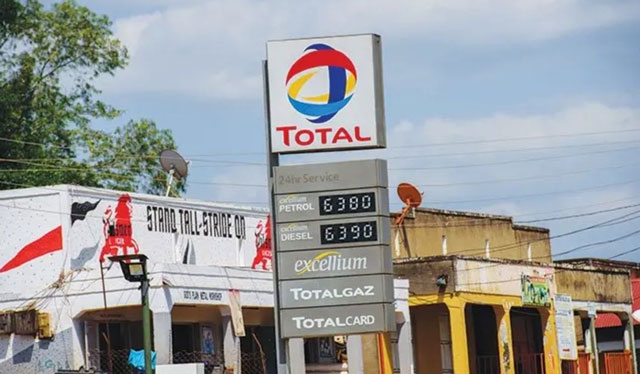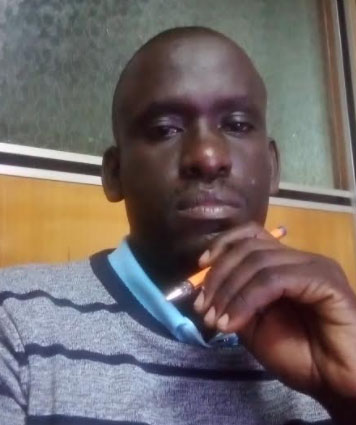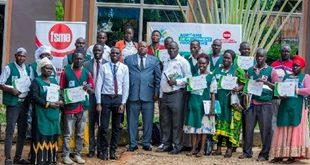
COMMENT | Samson Tinka | As of 14th July 2022, fuel pump prices were racing towards a record sh7,000 per litre in Kampala as the fear of disruption to the supply of fuel increased across the country.
The timing could not have been worse for the architects of the Parish Development Model, as ministry of finance experts grapple to contain likely effects of the rise in fuel prices on all sectors of the economy.
With commercial agriculture at the core of PDM, experts have a lot more to worry about. PDM success is tagged on four sectors, led by commercializing agriculture.
Commercializing agriculture requires four or so basic things, namely; land as principle requirement, capital to procure farm needs, labor both skilled and casuals, market for the produce and transportation of the ready products. All the above-mentioned critical enablers of commercial agriculture require mobility which supported by fuel.
Any tilt in fuel whether prices of availability immediately affects negatively the growth of agriculture and this would generally fail the PDM from inception.
I would outline the handicaps PDM will face along the lines below:
Drought and hunger.
Close to or over 518,000 people (over 40 percent of the population) in Karamoja Sub-region are facing high levels of food insecurity. Certainly, Karamoja can only participate in agriculture among the four pillars of PDM. With the hunger, drought, and the rains that are still far, it is clear that Karamoja may not be on board for PDM as soon as it’s required.
Any disbursement of money for PDM in ramoja is likely to be eaten by the beneficiaries. Common sense and logic calls for food in the stomach before thinking of planting, goat rearing or chicken keeping. This ultimately impairs success of PDM in Karamoja sub region. Livestock, the livelihood of Karamoja, is on the verge of being whipped out. Cows and goats luck water and pasture.
High cost of animal feeds
Two major economic activities that have supported both small and larger scale farmers have been chicken and pigs rearing. The cost of maize bran which is 70% major feeds for both pigs and chicken has gone wild. The average cost of a kilogram of maize bran is already past sh1200. This is unusual and so costly for any farmer.
Farmers in Wakiso which has 65% of urban farmers in Uganda are counting losses. My neighbor in Mabanga village, Namayumba sub-county has close to 500,000 layers at his farm. The cost of food for hens has increased by 85% and this has direct negative impact on the business profitability. At one point he struggled to get feeds. He had to pay upfront to the millers to be able to get him some chicken feeds.
Someone struggling to get maize floour for home consumption has been forced to sale his chicken and pigs at any price in order not to loose the animals and birds. Ideally the sold stock would have been the core stock to build on as part of PDM operationalization. These shortcomings have a big impact on the start and later success of PDM.
General food shortage
My wife passed by the food stall and was told food in Owino and Nakasero market was not only high but wasnt easily available. The stall owner had come back with half of the money he had gone with to shop food for his stall.
During COVID-19 lockdown, the country kept afloat because there too much food available even if money was scarce. Currently there is no money, no food, high fuel prices. Whereas
PDM would appear a good model on paper, the current situation may fail it from inception. In my own garden, the harvests were not good, the banana plantation has been hit by dry spell and we can hardly get enough food for my own home. What about those without a farm or garden?
In Kiruhura, Lyatonde, Mubende, Kiboga, Sembabule and the entire cattle corridor, cows now cost between sh200,000 to sh400,000 due to severe drought. The need for pasture and water for livestock is dire. The farmers are hiring water tank trucks to supply water. This is a huge cost. Farmers can’t break even in such arrangements.
High fuel prices
Fuel is an enabler in every sphere of life. Traders rely on commercial trucks and commuter taxis to have their goods move from a point to another in a landlocked country like Uganda. Currently 20-30% of taxis especially in Kampala are parked. Manufacturers are contemplating to either cut on production or completely suspend production. Kalangala power supplier has started load shedding because of fuel prices. The cost of household usable like sugar, salt, soap and cooking oil have all shot up.All these point towards the direction of a seemingly stillbirth of PDM.
BOU increase CBR to 8.5%
For the last 10 years, Uganda has registered stability in monetary space. Credit facilities have been relatively affordable. Even when COVID-19 struck, banks remained stable and profitable. Stanbic bank announced over sh275billion as its PAT (Profit after tax) for year 2021. We all know 2021 was largely a lock down year but such bank performance was and is a plus to BOU as a regulator of monetary and fiscal space. Now, the increase in BOU CBR means another hill to climb especially for borrowers.
Increase in cost of building materials
Cement and steel has increased by over 60% in the last 6 months. The cost of Y16 roofing iron bars was sh62,000 in January 2022, but is now close to sh100,000 depending where one buys. The increase in price of cement, steel, sand and stones will stifle the growth of this sector. Waiting to see the figures from UNBOS by end year.
What next then?
With all the above stopgaps highlighted, the sponsors and implementers of this model should quickly run to the boardrooms to readjust their implementation timelines.
The government should engage an emergency gear to deal with food and fuel crisis. The rains especially in the west and central Uganda are still 45 or so days away. This is a long time.
Cars are getting fewer on Kampala roads, which will have an impact in the overall tax collections. URA tax on fuel collections will be less by end of financial year. Certainly, the fuel station owners are also yelling. Their cost of business has remain the same, but the sales dropped.
As a country, our risk assessment and mitigation culture under the Ministry of Disaster Preparedness, is in the intensive care unit.
A country like UAE, which lies in a desert, has food for its people, visitors and migrants throughout the year but a country like Uganda with two three months rain seasons every year has no food. Strangely, despite this crisis internally, the country continues to allow export of food.
From the above scenario, it is clear PDM risks to start badly unless new plans are hatched.
The Ukraine and Russia war, which has been the scapegoat, cannot be the reasons we do not have food. For fuel, the argument can be understood, but for hunger in Karamoja and other parts of the country, we need to find someone to hang on the cross.
 Samson Tinka is a safety and security consultant | Director Matts Secure Solutions Ltd | tindsam@yahoo
Samson Tinka is a safety and security consultant | Director Matts Secure Solutions Ltd | tindsam@yahoo
 The Independent Uganda: You get the Truth we Pay the Price
The Independent Uganda: You get the Truth we Pay the Price



Hi,
I was hoping to write a blog post for your website, which shall benefit the both of us. I will provide you a 500-word blog that is relevant to your niche and in return, you can let me add a backlink within the body of the article. I pledge to deliver high quality content, which has not been posted anywhere else.
If you find my offer reasonable, we may proceed. I look forward to hearing back from you. Have a good day!
Regards,
John Adam
healthnic1@gmail.com